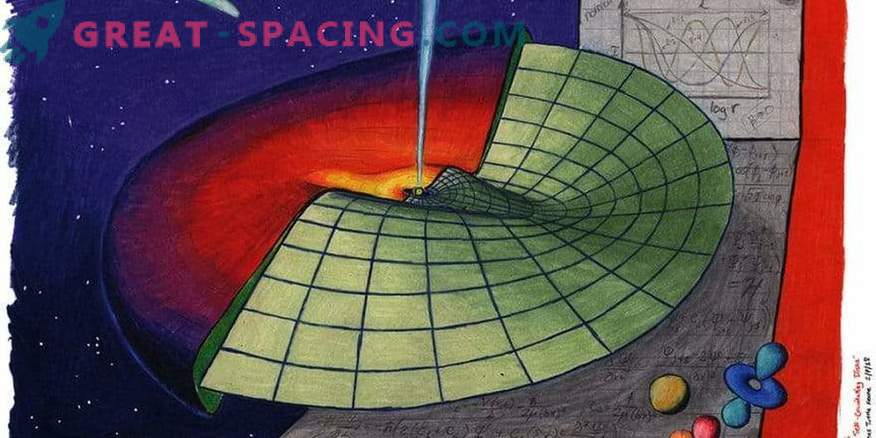
The artistic vision of the work of MNRAS 475, 4, presented in 2018. Wave propagation through an astrophysical disk can be understood using the Schrödinger equation (the cornerstone of quantum mechanics)
Quantum mechanics is a branch of physics that sometimes manages the strange behavior of tiny particles that fill the Universe. The equations describing the quantum world are limited to the subatomic sphere. But a recent discovery suggests that the Schrödinger equation may be useful for describing the long-term evolution of some astronomical structures.
The research belongs to Konstantin Batygin. Massive astronomical objects are often surrounded by groups of smaller bodies, rotating like planets around the sun. For example, star flocks revolve around supermassive stars, and giant rocky and icy objects revolve around stars. Thanks to gravitational forces, these huge volumes of material are formed into flat disks. They are represented by a multitude of individual particles, making turns in a massive manner. They can stretch a few hundred light years.
Usually, astrophysical material discs do not retain round shapes during the entire lifetime. After millions of years, they have developed to demonstrate large-scale distortions, bends, or deformations. It was these emerging defects that puzzled scientists. Even computer models did not allow to fully understand the situation. Batygin decided to turn to perturbation theory to derive a simple mathematical representation of the evolution of the disk. This approximation is based on equations created in the 18th century by Joseph Louis Lagrange and Pierre-Simon Laplace. Within the framework of the equations, individual particles and pebbles on each orbital trajectory are mathematically matched. As a result, the disk can be modeled as a series of concentric lines, slowly exchanging the orbital moment between themselves.
But the use of the model led to an unexpected result. Making fraud disk, scientists have brought the number of lines on the disk to an infinite number, which allowed to blur them to the continuum. So the calculations included the Schrödinger equation.
The Schrödinger equation is the basis of quantum mechanics, because it describes the non-intuitive behavior of systems on atomic and subatomic scales. One of the behaviors is that subatomic particles rather behave like waves rather than discrete particles. Batygin assumes that large-scale deformations in astrophysical disks behave like particles, and their distribution in the material can be described mathematically.
With the Schrödinger equation, one can characterize the long-term evolution of astrophysical disks. And this is surprising, because they do not think about this equation if they consider distances in light years. As a result, it is simply amazing that the formula, usually used for extremely small systems, works to describe large ones.











































